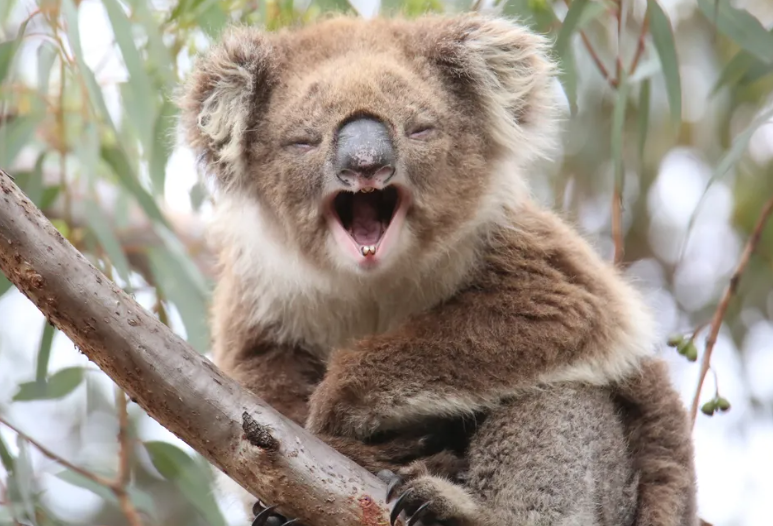 |
|
(Pixabay)
|
Full Story: IFLScience (UK) (11/11)
“Nosy” Humans Have Found A Way To Tell Koalas Apart With 90 Percent Accuracy
The technique, discovered by an amateur but now verified by scientists, could play a big part in saving the endangered animals.

Koalas Kiki and Lulu, despite their differences in ages, both have noses that will allow scientists to recognize them most of their lives, but it won’t stop them judging you.
Image Credit: Koala Clancy Foundation
Koalas’ noses are so distinctive they can be used to tell the animals apart in the wild, even at considerable distances. The discovery could cut costs for teams trying to save the beloved creatures, and also save humans and koalas alike from stress.
Despite being a major part of Australia’s tourism industry, and possibly the most loved of all the continent’s distinctive fauna, koalas are in serious trouble. They are under threat from sexually transmitted disease, dogs, cars, and habitat loss. Global heating is not doing them any favors either, particularly by causing increasingly large fires.
Fortunately for koalas, all that love counts for something. In the case of the Koala Clancy Foundation, it has inspired volunteers to plant 165,000 trees of sorts koalas like to eat in two regions of the state of Victoria. Foundation President Janine Duffy keeps a keen eye out to see how many furballs are taking advantage of the gift she’s helping provide. She needed a way to tell if she was seeing many koalas, or the same few over and over again.

Research scientists in the same predicament catch koalas and microchip them, but Duffy told IFLScience she “didn’t have a microchip license,” and consulted other experienced koala wranglers who suggested things like looking for patterns on their bottoms. Unfortunately, that’s of limited value in a species that spends a great deal of its time sitting. Adorable as their furry ears may be, they also proved of little value for identification. Some features like wrinkles around the eye could be useful for a while but, “changed when they got wet or tired,” Duffy added. Koala fingerprints are known to be exceptionally distinctive but are a bit hard to observe at a distance.
For any endangered species not recognizable from a distance it is very valuable to have a way to tell them apart.
Dr Valentina Mella
Then one day Duffy saw two males sitting unusually close to each other for such territorial animals. She noticed how different their noses looked, and after moving back and forth between the pair decided she could distinguish at least these two with a pair of small binoculars. Duffy then set out documenting the noses of every other koala on the site, and had little trouble telling them apart.

After spending enough time on the process to satisfy herself that nose shape was stable over at least seven years, Duffy contacted Dr Valentina Mella of the University of Sydney. Dr Mella told IFLScience she was initially skeptical, having worked with a great many koalas and never noticed nasal differences. When Duffy showed Mella photos and pointed to the features Mella said she “thought maybe it was distinctive to this one population in Victoria, but I thought it was important to check.”
Certainly, Mella had no doubts about the significance of the technique if it worked. “For any endangered species not recognizable from a distance it is very valuable to have a way to tell them apart,” she told IFLScience. Considerable work has gone into finding identifiable features in species as different as whale sharks and cheetahs.
It has taken 25 years since Duffy’s lightbulb moment, but a study the pair conducted with student Tori Stragliotto has now been published, showing that nose features can be used to distinguish koalas in several populations with 90 percent accuracy. The results were achieved both for koalas snacking on the trees Duffy helped plant and a heavily studied and microchipped population in New South Wales.

Mella told IFLScience she suspects this can be improved with more experience and possibly by training AI, but that it is already fairly typical for species considered individually recognizable.
Capturing koalas so they can be microchipped is expensive and appears to cause them stress, which may make them more vulnerable to some of the threats they face. Being able to do it from the ground avoids that. Mella also noted that the work that is required can often be done by citizen scientists taking photos of koalas from the ground, a task for which there should be many volunteers.

To those who doubt the challenges of identifying a creature famous for sleeping more than almost any other, Mella noted, “They’re not as sedentary as people think.” Moreover, Mella added, “They can have quite large ranges, particularly when fragmented by agriculture or urban areas, and they regularly visit their whole territory, males to defend it and females to get away from the males.”

The study is published open access in Wildlife Research.






